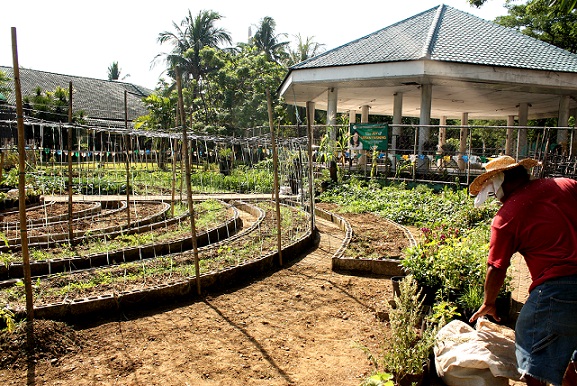WHILE vegetables are packed with nutrients essential to the human body, not all are a hundred percent safe to eat.
Environment group Bangon Kalikasan warned that urban-grown vegetables may be contaminated with heavy metals which are detrimental to people’s health.
Joey Papa, Bangon Kalikasan president, said some of these vegetables are grown in the urban farm inside the Quezon City Memorial Circle, a project of the local government.
He said the group has “some reservations” in keeping a vegetable garden in such a heavily-polluted area. He observed that a person cannot even breathe properly in the said area.
“Maganda naman yung intensyon (The intention is good),” Papa said of the government’s efforts to encourage urban farming, although describing the approach as “quite problematic.”
What is alarming is that the vegetables absorb too much lead coming from gasoline emissions from the vehicles in the vicinity, he said in a phone interview.
Papa expressed concern for the health of those who have been receiving the vegetables harvested in said urban farm and given away for free.
Cristina Perez, development officer of “The Joy of Urban Farming,” a project of QC Vice Mayor Joy Belmonte, assured that urban-grown vegetables are produced through the use of organic fertilizer, which makes them safe to eat.
She said the vegetables harvested from the farm are given to excursionists who visit the 600-square meter farm to encourage them to plant even in the small pots in their backyard.
“Bukod sa meron ka nang maihahain sa hapag-kainan ay nakakatulong ka pa sa environment kasi lumilinis ang hangin (Aside from having food on your platter, you are helping the environment because the air is cleaned),” Perez added.
Bert Mendoza, one of the project staff, said by giving away urban vegetables to excursionists will also enable them to make a comparison between crops produced by chemical-based fertilizers and those produced organically.
Papa suggested that to lessen the pollution in urban vegetable farms, there should at least have a thick barrier of trees to protect the garden from stationary and mobile sources of pollution like factories and vehicles.
The city government, however, cleared an area in the QCMC of trees to make way for a carnival. Papa said since the city government has an urban farm project, it could have developed the Circle to serve as a greenhouse. “Sana yung mga puno hindi pinakialaman (I hope they leave the trees alone),” he said.
 He said it would be a good idea for local government look for more reserved or “interior” places to convert into urban farms.
He said it would be a good idea for local government look for more reserved or “interior” places to convert into urban farms.
“Kung may makikitang ganoon, bakit hindi? (If the local government can find such a place, then why not?)” Rey Palacio, a Zero Waste Management and chemical safety campaigner from Eco Waste Coalition, said.
The Ecowaste Coalition, an environmental watchdog, earlier called for government action over the lead paint coating some playgrounds in Manila. Lead is a toxic metal and studies have shown that lead poisoning is particularly harmful to children as it causes damage to their brain and development. It could also contaminate vegetables in urban farms near the playgrounds or structures coated with lead paint.
He said that even if the farm is moved to interior parts of the city, there is no guarantee that the vegetables will be totally free of lead.
He said vegetables sold in the market are contaminated by pollutants in the urban air. Worse, he warned that formalin could have been sprayed on the vegetables to keep them fresh longer.
Palacio said the local government should take steps to lessen, if not eradicate the contamination of vegetables in urban farms.
Palacio also said with pollution becoming a national concern, vegetables grown in urban farms are not the only ones that are contaminated. Vegetables in rural areas are also becoming exposed to dangerous chemicals.”When one burns plastic, chances are the crops in the nearby garden are affected,” he cautioned.
Palacio advised people to wash the vegetables with baking soda and water solution before cooking or eating in order to neutralize possible contaminants.
He said it is still best to grow vegetables in every individual’s backyard. This way the residents would know where their food is coming from.
Aside from solving the problems of malnutrition, he said backyard farming can also bring additional sources of income to families and barangays. If they reap a good harvest, they can sell these to their neighbors.
(The author is a journalism student of the University of the Philippines who is writing for VERA Files as part of her internship.)
